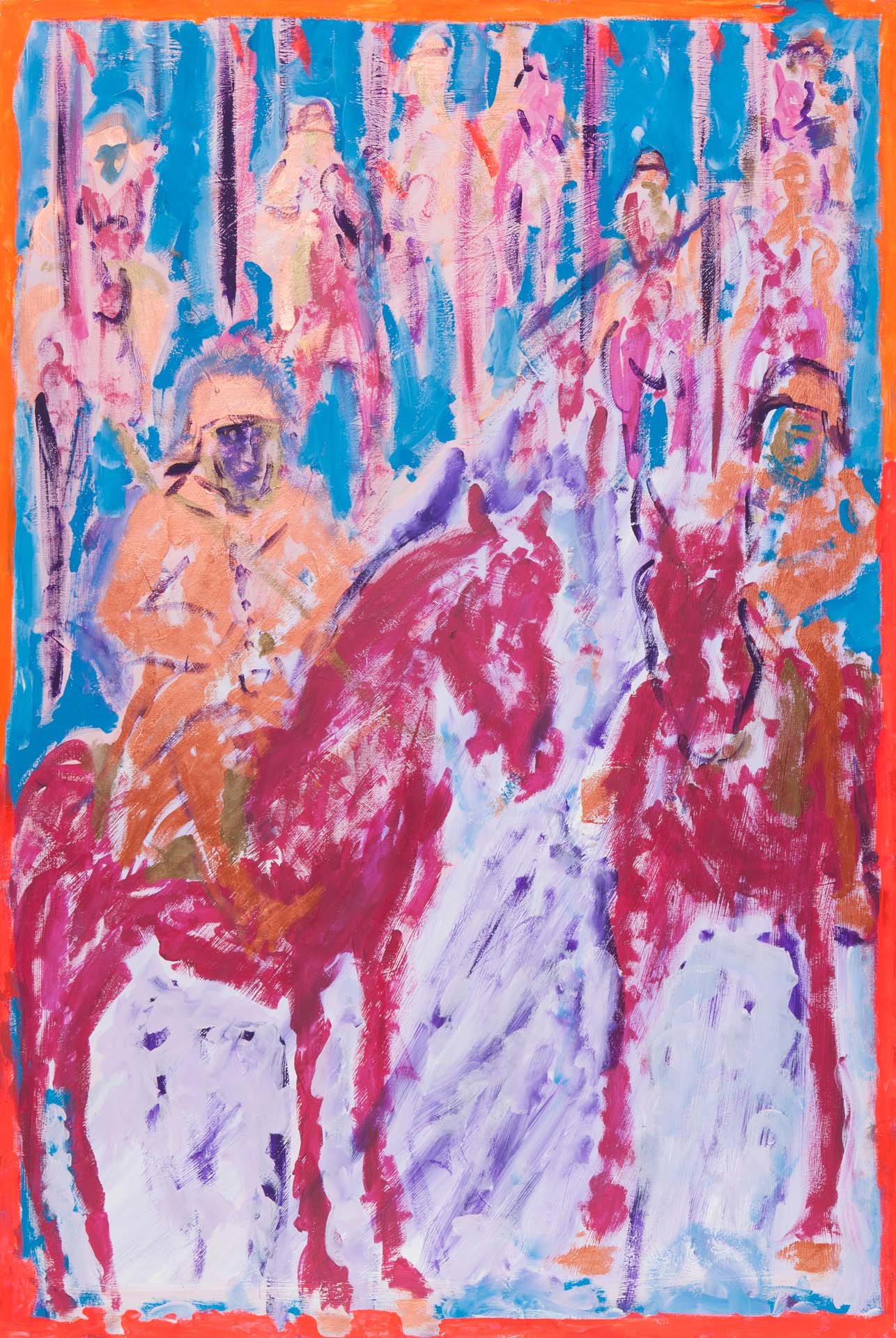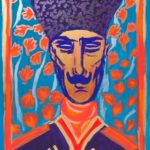Die Purpurreiter

Medium
In his novel On the Mable Cliffs (1939), the German writer Ernst Jünger used this term to indicate a fictional volunteer army, in which the protagonist had taken part. Ernst Jünger by himself was a complex and astonishing personality: war hero in World War I (the youngest officer to attain the highest German decoration), he became a novelist, a philosopher, a magician of nature and a man of action at the same. His aesthetic writing is highly personal and recognizable. This painting stems from a parallelism between the Purprreiter (Knights of the Purple), a sort of militia obeying in war to an exoteric Order, and Jünger’s active participation to the voluntary private army (Freikorps) led by Gerhard Rossbach, during the local both civil and border wars ensued in and around Germany between 1919 and 1921. Precisely, the anachronism (a technique superbly adopted in the novel, where humming armored cars appear in an imaginary medieval scenario) appears in the photograph at the origin of this painting. Düsseldorf, January 1919: a squadron of horse-mounted lancers with winter uniforms and helmets, as in a medieval scene, is deployed on a downtown street, the horses’ hooves on tramway rails , electric lights on in the overlooking apartments. Heroes and losers, these were courageous soldiers who kept fighting for their ideals despite the tragic collapse of their Nation. A long time lost Germany, before Hitler came. The same old Germany of Fred Uhlman’s father, who did not abandon the Country he had fought for. He kept his war decorations and officer insignia high, he didn’t flee. He was deported and killed, but he kept faithful to himself. A Hero.Artist
Zalmoxis Project
Title
Die PurpurreiterDimensions
100x150



